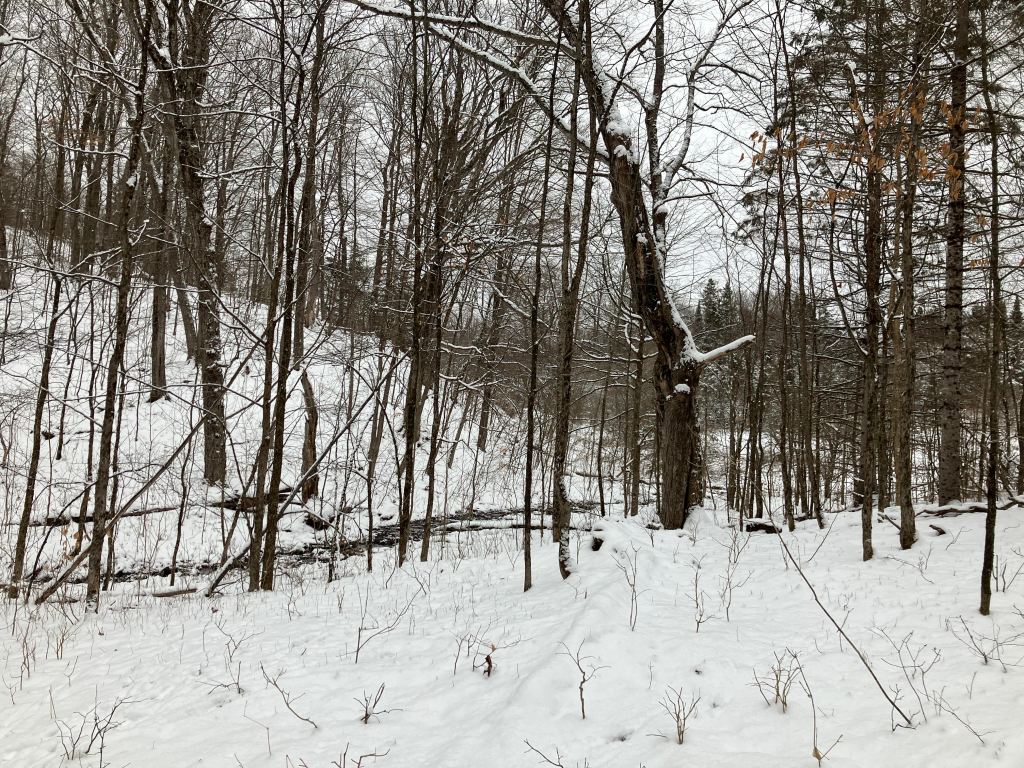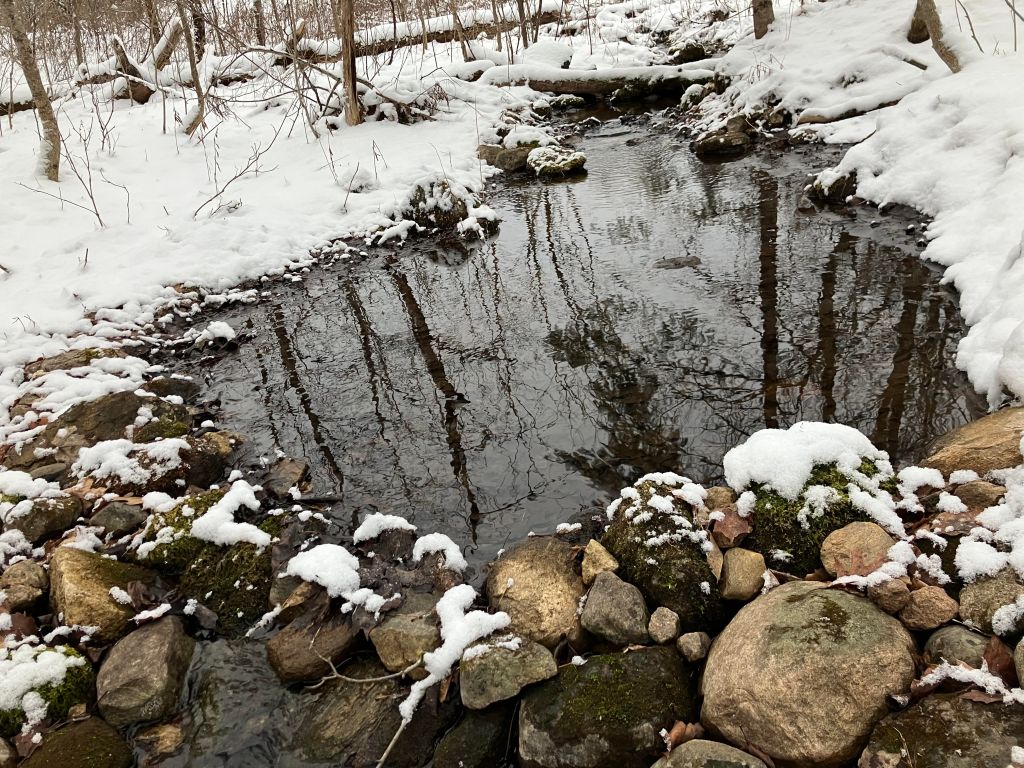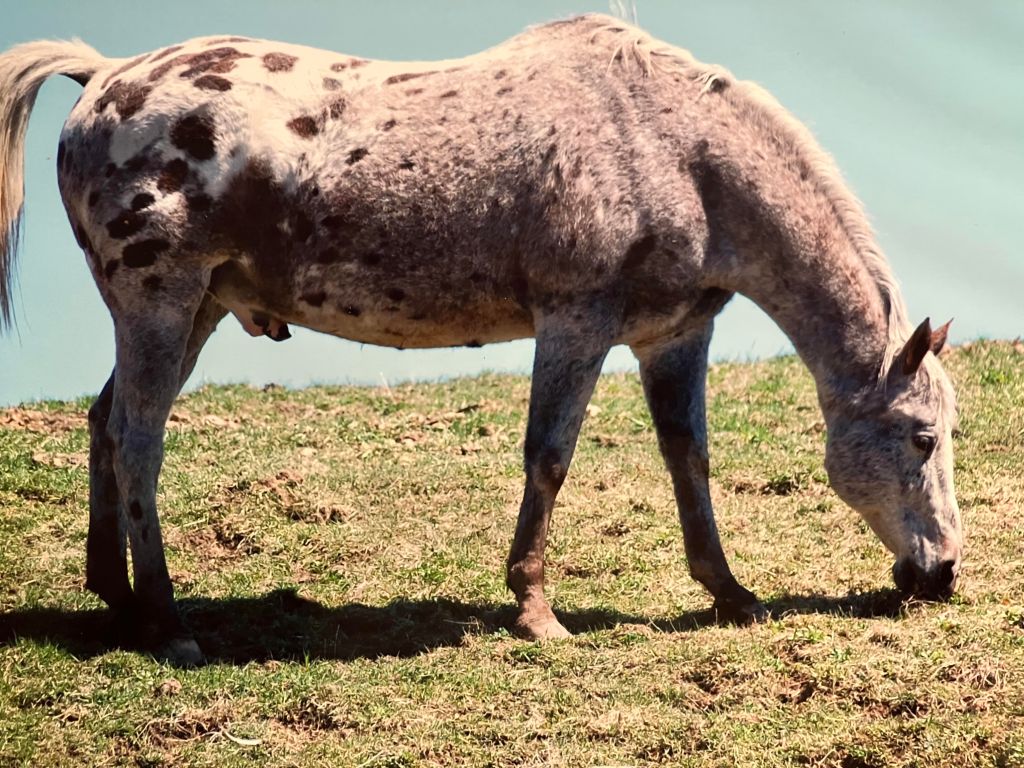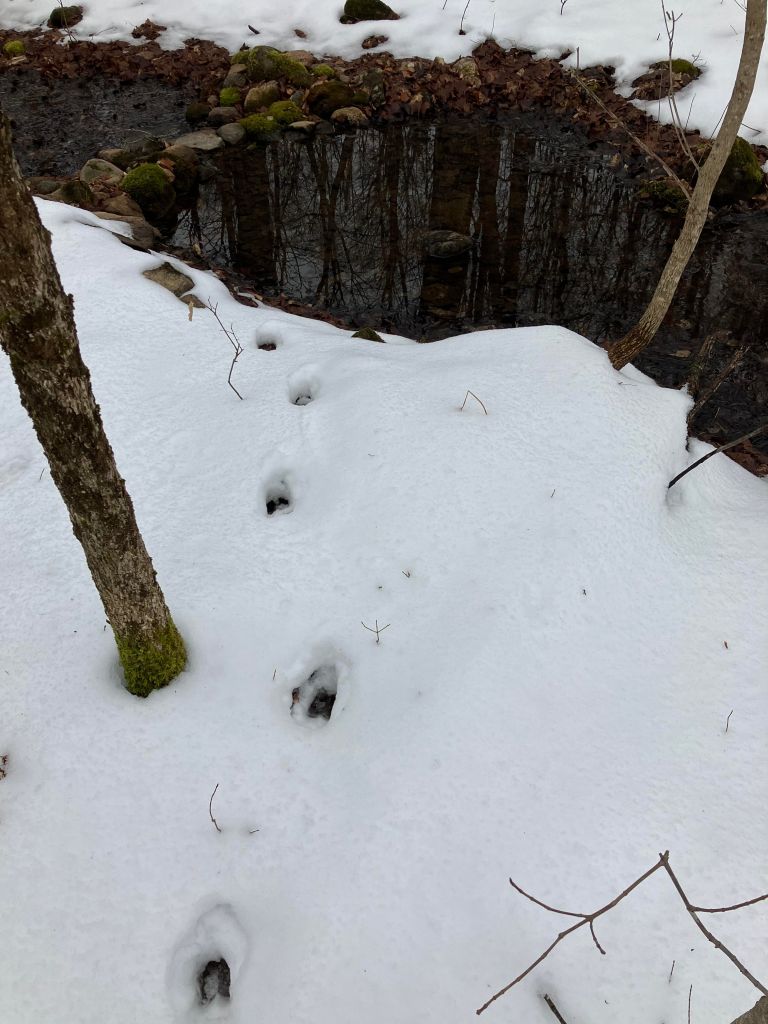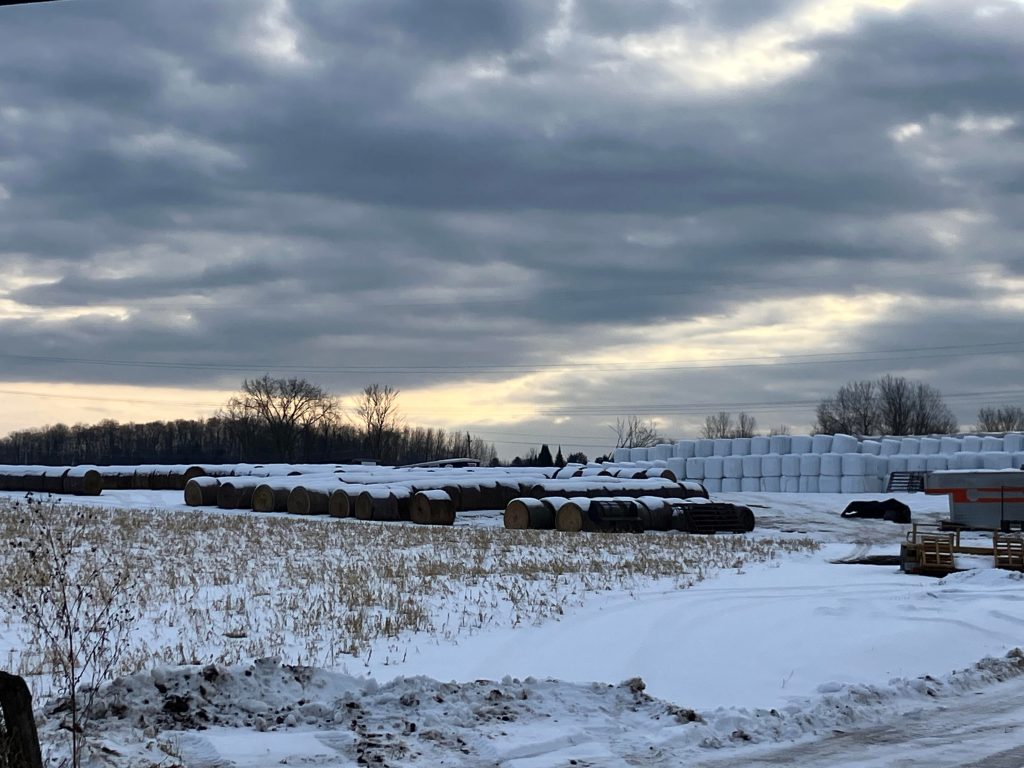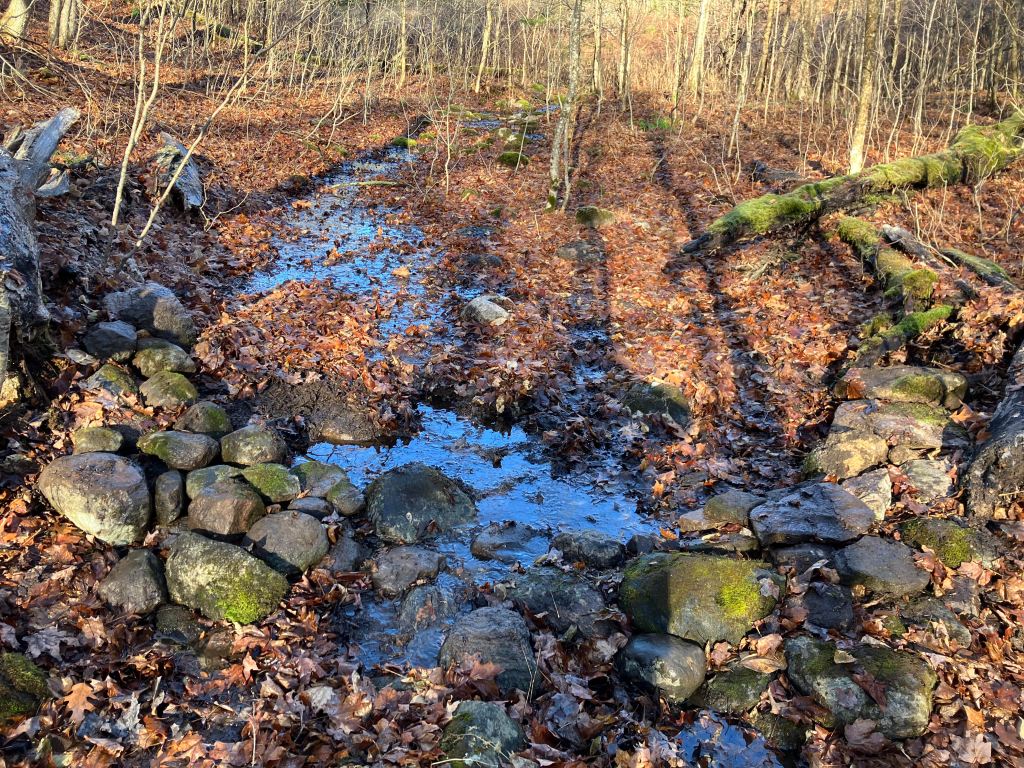A walk in the woods is easier in winter.
For one, no bugs. No blackflies or mosquitos to crawl in your ears, or ticks to fasten themselves to your ankles.
No blackberry canes to claw at your jeans. Today, in the open area on the hydro line, those canes are mostly flattened by a few inches of snow cover.
So far this season, the snow’s still shallow enough to walk anywhere in a pair of boots and not get your feet wet.
Best of all, with the trees bare and the forest floor white, you can appreciate the bigger picture — the contours of the forest, ridges of rocky Canadian shield, and the shape of the watershed feeding my little getaway at Kinross Creek.
I use a ski pole to help navigate my way up the hill from the road, and immediately find deer tracks. Deer blaze proven trails in the woods, often finding the flatter routes and paths of least resistance through obstacles like rocks, trees and valleys. In winter, their hoofprints in the snow are evidence of these ancient superhighways.
I follow the deer tracks over to the little creek, which, despite the minus-5 temperature this January morning, is flowing steadily in the area connecting Ali and Colleen’s ponds. The drystone work I did last summer catches the flow into the two ponds but also directs it through central run-downs where the creek continues downriver.
The water’s burbling soothes the soul in this quite woodland. No birdsong today except for the odd caustic commentary of two crows in the treetops.
And no stonework tasks on my ramble today. I can just potter around the creek, and take a look down the hill at the farmland sprawling to the east. Several draft horses are munching hay next to a small shed.
Yesterday while driving along the road, Nadine and I caught sight of an old horse wearing a quilted coat for warmth. He was wandering solo, munching shrubs at the roadside. Was it the Appaloosa? Hard to tell. His head was grey but the coat camouflaged his body.
Appaloosa horses have origins in the US Pacific Northwest and are known for their versatility, speed and distinctive leopard spotting. They are handsome beasts.
The last time I saw the Appaloosa was in 2021. He was already 28 years old then and not long for this world. His spotted coat was still gorgeous but he was moving stiffly and had some vision trouble.
On my trek today, I chance upon Casey, the 3rd generation farmer at this beef cattle operation. His tractor plows are lined up awaiting more snow expected in the next few days. In winter, he and family run a snowplow business, earning seasonal income while keeping local roads and laneways open. I chat with Casey for a few minutes and inquire about the mystery horse with the coat.
Indeed, it’s the Appaloosa! He’s hanging in there! The older horse had started to shy away from the younger horses but had helped out by fostering a colt in the barn, out of sight of the road. Then this fall, Casey told me, the Appaloosa perked up a bit and was let back into his old field.
We’ve had our cottage on Minden Lake nearby since 2011 and I’ve seen the Appaloosa in the field each year whenever we pass by, so I guess I’m a little sentimental. I’m not the only one. A local gent who runs in this area said he’s always been cheered by the spotted horse when he jogs past the farm. Likewise our daughters enjoyed catching sight of the Appaloosa as he roamed his favourite field. I took a pic of the horse a few years ago in his prime…
He’s 30 years old now, well into his golden years, and wearing a coat for warmth in winter. But wandering the field perks him up, the same as a walk in the woods puts a kick in the step of the guy visiting Kinross Creek.

